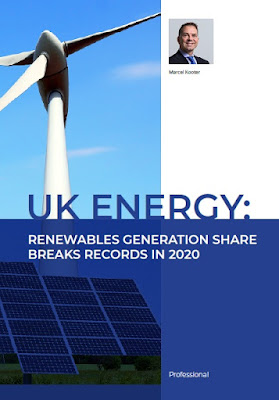Wind Power: Future Forecasts, Trends and Developments
Wind power is currently one of the most promising sources of renewable energy when looking towards a sustainable future. The wind power industry has grown exponentially over the last decade, with multiple wind farms being developed around the world to harness the natural power of moving currents of air. In some regions, wind power has already surpassed fossil fuels in terms of delivering affordable energy, and new technologies will only drive operating costs further downwards.
The International Renewable Energy Agency (IRENA) recently
released a new report titled ‘Future of Wind’
in which it outlines a series of options that could be deployed to accelerate
transition to wind power by 2050 in line with Paris Agreement targets.
As a senior business leader in the global energy sector, Marcel Kooter has a
long-standing passion for research into renewables and methods of generating
energy from sustainable sources without compromising on meeting global energy
needs.
The Best Locationsfor Onshore Wind Farms
Increasing Wind
Capacity
IRENA estimates that as much as 35% of global energy
requirements could be met by wind power by 2050. However, if this is to happen,
wind power production capacity would need to be increased tenfold. This would
require an additional 1,000GW from offshore wind farms and 5,000GW from onshore
farms, according to the report. Scaling up wind power generation in this way
could play a prominent role in reducing CO2 emissions.
Coupled with increased energy efficiency and deep
electrification, almost a quarter of the total targeted emissions cuts could be
achieved by 2020 if wind power is scaled up to this level. This would represent
almost 6.3 gigatonnes less of carbon dioxide entering the atmosphere each year.
 |
|
Offshore Expansion
One of the key fears cited by opponents of increasing the
number and capacity of wind farms is aesthetic. Some worry that unsightly wind
turbines cropping up everywhere will ruin much of the natural beauty of the
land. However, in most areas, this concern is unfounded, as the majority of
expansion will take place offshore.
Advances in technology make it easier and more affordable
than ever before to locate wind farms in the oceans, and there are multiple
benefits to having wind turbines there rather than on land. Land geography is
often uneven which results in unpredictable and slower winds. Offshore, wind
power is heightened as there is nothing getting in the way, so the potential
for power generation is much higher.
Buoyant Turbines
The possibilities for offshore expansion of wind farms have
been increased even further with the introduction of buoyant turbines that can
be situated in deeper waters, rather than the shallow waters found closer to
shore. The Hywind park off the coast of northern Scotland is one such example.
Five giant turbines sit a full 15 miles offshore in waters over
300 feet deep, made buoyant by keels constructed of concrete and steel. These
five turbines generate enough electricity to power over 20,000 homes in the
region and, despite their 174 metre heights, are only just visible from shore
on a clear day.
The IRENA report outlines many more plans for future
development potential within the wind power energy sector.

